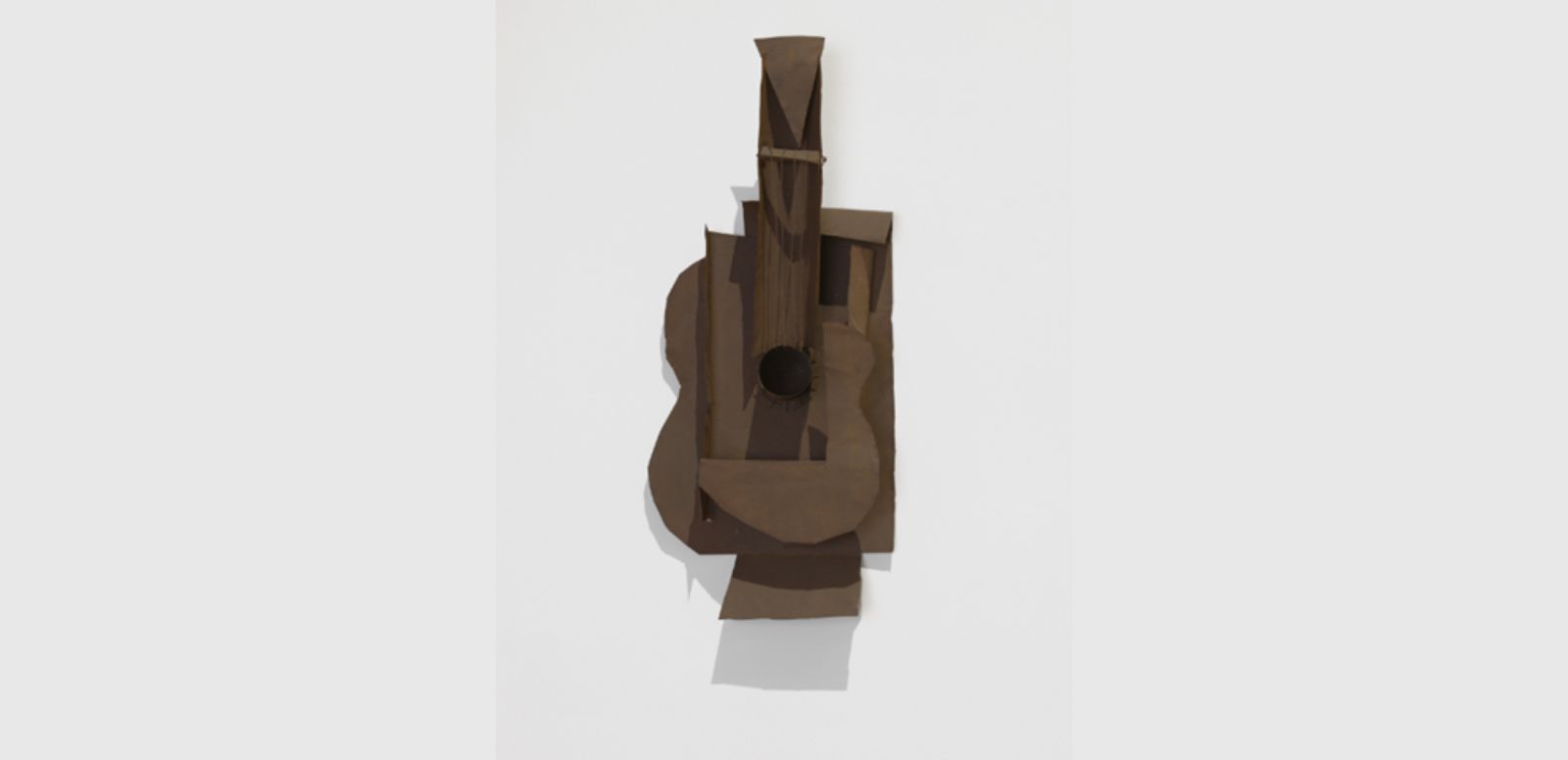
Museum of Modern Art, Nueva York
© Sucesión Picasso, VEGAP, Madrid, 2024
Pablo Picasso's Guitar (1914) marks a radical leap from the conventional sculptural tradition to a new assemblage technique. In its first version, it was created in cardboard in 1912, and later recreated in sheet metal. This work presents novelties in the use of materials, moving away from traditional ones such as bronze, wood or marble.
Before the 20th century, sculpture often depicted the human form and was primarily an art of carving and modeling solids. In Guitar (1914), Picasso breaks with these traditions, examining an everyday object and initiating a new type of sculptural construction: constructed of sheet metal. The piece has no solid center, but is open to space. With a superficial arrangement of planes to be seen from the front, it appears both pictorial and sculptural, relating to Picasso's cubist collages made from newspaper clippings and the like.
This sculpture, despite being the same in size and shape as a real guitar, defies its conventional form. Picasso dismantles the structure, turning the flat surface into an empty box. The sound hole, usually an empty hollow, acquires substance, transforming into a cylinder that projects outward. The frontal view of the cylinder becomes a line drawing of the sound hole, highlighting Picasso's ability to open up the central core of the sculpture, allowing one to see through it.
Sources:
Ficha de la obra, Museum of Modern Art: https://www.moma.org/collection/works/80934
Exposición Picasso: Guitars 1912–1914, 2011. Museum of Modern Art: https://www.moma.org/calendar/exhibitions/1088

